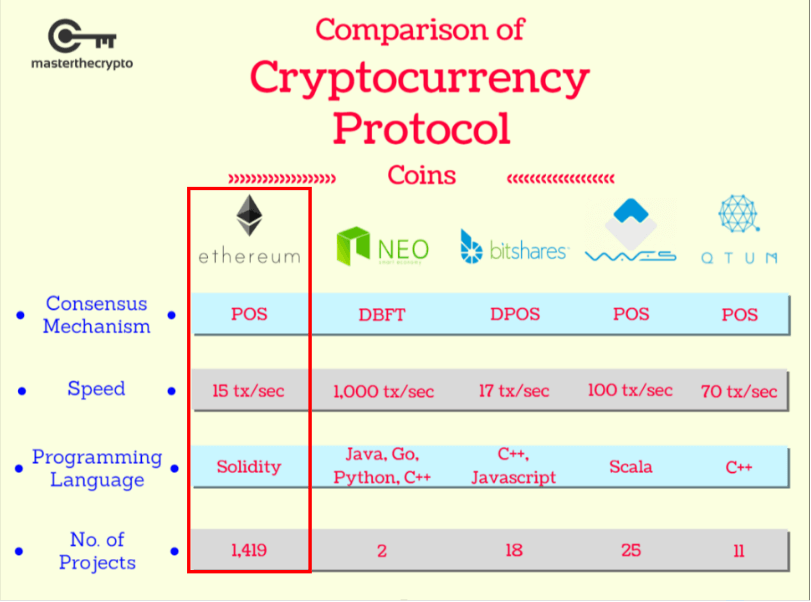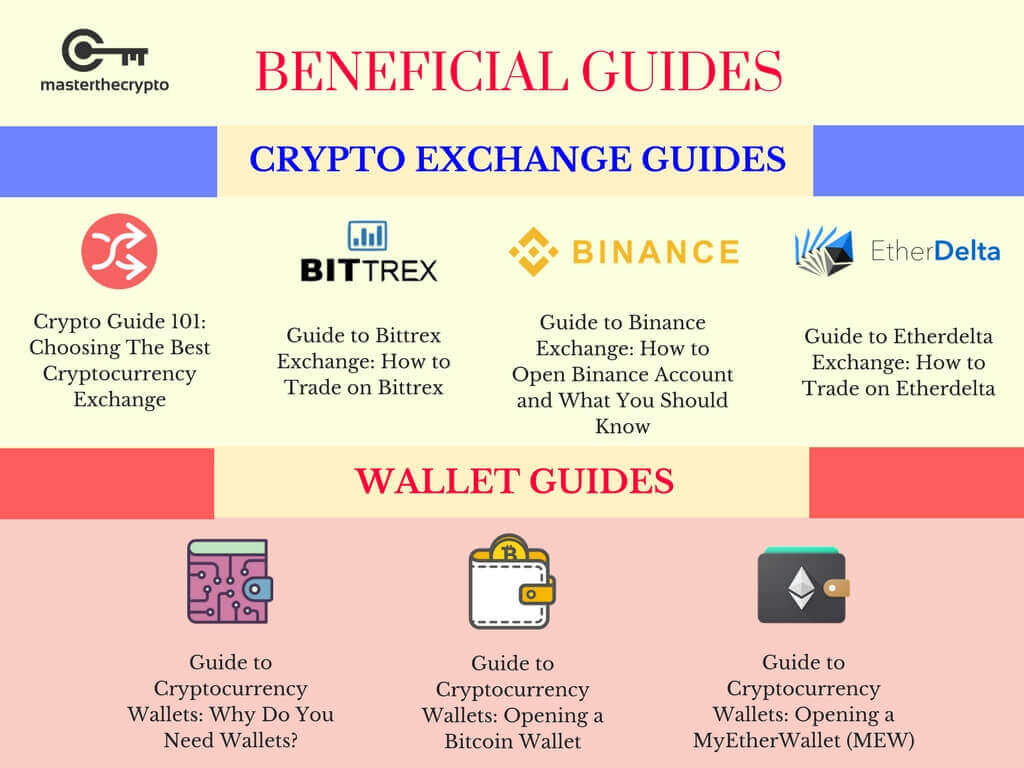Guide to Ethereum Blockchain Protocol

[ad_1]
This article is a guide to Ethereum blockchain protocol, exploring various protocol-level characteristics. This is the first article in the Guide to Blockchain Protocols: Comparison of Major Protocol Coins series.

Launched in 2015, Ethereum is an open-source, decentralized software platform that enables the revolutionary functionality of Smart Contracts and Distributed Applications (ĐApps) to be built and run without any downtime, fraud, control or interference from a third party. Ethereum has its own native programming language, helping developers to build and publish distributed applications. The potential applications of Ethereum are wide-ranging. Ethereum is the second biggest cryptocurrency in the market, but unlike Bitcoin, it allows other dApps to build on top of its blockchain. (Read more: Bitcoin vs Alt Coins Returns: Comparison of Gains Between Bitcoin & Altcoins Investing)
Here is a detailed look at the key characteristics of Ethereum:

Consensus Mechanism
Ethereum uses a Proof-of-Work (POW) consensus algorithm but is making preparations to transit to a Proof-of-Stake (POS) system. POS is a different way to validate transactions in a distributed consensus system.
POS algorithm was first used in Peercoin back in 2012.
In a POW system, miners are required to validate transactions by performing computational work, basically solving mathematical problems. Under a POS system, ‘miners’ are chosen in a deterministic way, depending on the number of coins they choose to stake. That is why ‘miners’ in a POS system is often referred to as forgers, since the selection process requires ownership of the native tokens to be staked. There are no block rewards in a POS system; forgers rely on 2 forms of reward:
Transaction Fees: Fees paid by users in the network to send transactions or execute smart contracts
Interest: Forgers who stake their coins will reap interest on the staked coins. This is an incentive for forgers to stake their coins and engage in the validating process, requiring an inflationary coin supply.
Why Ethereum Wants to Use PoS?
The Ethereum community – led by its founder, Vitalik Buterin – has planned to transit from a POW to a POS algorithm from the start, as detailed in their roadmap. A major reason for this is that POW is extremely energy-inefficient, requiring huge amounts of electricity in the mining process. According to research, a single Bitcoin transaction required the same amount of electricity as powering 1.57 American households for one day. There are even some estimates that bitcoin transactions may consume as much electricity as Denmark by 2020!
Transaction Speed
In ideal circumstances, the Ethereum blockchain can process an average of 15 transactions per second. The average block time (time taken for a block to be mined) for Ethereum is 15-20 seconds, which is significantly faster than Bitcoin’s average of 10 minutes each block! Here’s a resource to view the block times. Sometimes, transactions may take longer due to network congestion. One should always look at the current state of the Ethereum network before inputting gas fees (Gwei) to initiate transactions. Ethereum is constantly working to enhance the scalability of the network, and one solution is called Sharding.
(See more: Guide to Ethereum: What is Gas, Gas Limit and Gas Price?)
Programming Language
Solidity is a custom programming language for writing smart contracts running on the Ethereum Virtual Machine(EVM), created specifically for Ethereum. It is a contract-oriented, high-level language whose syntax is similar to that of JavaScript and it is designed to target the EVM. The context of the development and motivations behind Solidity arose when there was a desire to test two parameters during the creation of Bitcoin:
First Parameter: A trustless, decentralized database enjoying security enforced by the austere relentlessness of cryptography.
Second Parameter: A robust transaction system capable of sending value across the world without intermediaries.
The past few years has birthed yet another need for a third missing feature to drastically enhance the functionalities of blockchain technology; a sufficiently powerful Turing-complete scripting language. Up until this point, most innovation in advanced applications such as domain and identity registration, user-issued currencies, smart property, smart contracts, and decentralized exchange has been highly fragmented. Implementing any of these ground-breaking technologies required creating an entire meta-protocol layer or even a specialized blockchain.
However, each and every one of these innovations can potentially be made much easier to implement and scale. Solidity was then created to build a stronger foundational layer with a powerful scripting language for all of these protocols to build upon. Ethereum is a modular, stateful, Turing-complete contract scripting system married to a blockchain and developed with a philosophy of simplicity, universal accessibility and generalization. Their goal is to provide a platform for decentralized applications – an android of the cryptocurrency world – where all efforts can share a common set of APIs and trustless interactions without any compromises.
(Read also: Coins, Tokens & Altcoins: What’s the Difference?)
Traction
There are currently 1419 projects built on top of the Ethereum platform at the time of this writing. In comparison with all other blockchain protocols, Ethereum is the most popular platform for the creation of dApps and tokens, far beyond that of any other protocols. The nearest competitor is Waves blockchain, which features 25 projects. Ethereum’s dominance as the platform of choice for new projects is attributed to its unifying standards, which simplifies integration into the Ethereum network. Here is a chart of Ethereum’s share of the market:

Ethereum Transactions Process
Whenever a user wants to send Ether (ETH) across the network, the transaction is propagated across various devices running the Ethereum protocol globally. Once the transaction is verified, it then “waits” inside the Memory Pool (also called ‘Mempool’), which is a temporary resting place for transactions. Miners will pick transactions from the mempool to be included in the next block, according to various factors such as fees and age of the transaction. Until it is picked up, it is considered as an “unconfirmed transaction” or a “pending transaction”. Here’s the process if you’re trying to send using MEW wallet:

In some cases, there are so many transactions in the network and since blocks are finite in size, not all transactions are picked instantly. In that situation, you need to wait for a certain amount of time until your transaction is included in a block.
Once your transaction is included in the block, it then receives its first confirmation; the transaction will transit from becoming ‘pending’ to ‘confirmed’. Every new block mined means an additional layer of confirmation. The more confirmation the transaction has, the more secure it is as it will be much harder for hackers to alter. You should always monitor and verify your transactions.
(You should also see: Guide to Ethereum Hard Forks: Ethereum Classic, Etherzero & Metropolis)
Beneficial Resources To Get You Started
If you’re starting your journey into the complex world of cryptocurrencies, here’s a list of useful resources and guides that will get you on your way:

Trading & Exchange
Wallets
Read also: Guide to Margin Trading & Derivatives: Are Cryptocurrency Exchanges Really Manipulating? and Guide To Cryptocurrency Trading Basics: Do Charts & Technical Analysis Really Work?
Enroll in our Free Cryptocurrency Webinar now to learn everything you need to know about crypto investing.
Get our exclusive e-book which will guide you on the step-by-step process to get started with making money via Cryptocurrency investments!
You can also join our Facebook group at Master The Crypto: Advanced Cryptocurrency Knowledge to ask any questions regarding cryptos!

I’m Aziz, a seasoned cryptocurrency trader who’s really passionate about 2 things; #1) the awesome-revolutionary blockchain technology underlying crypto and #2) helping make bitcoin great ‘again’!
[ad_2]
Source link

